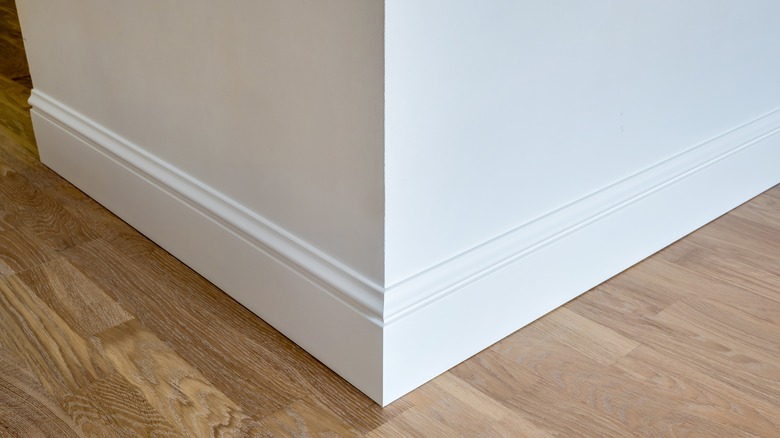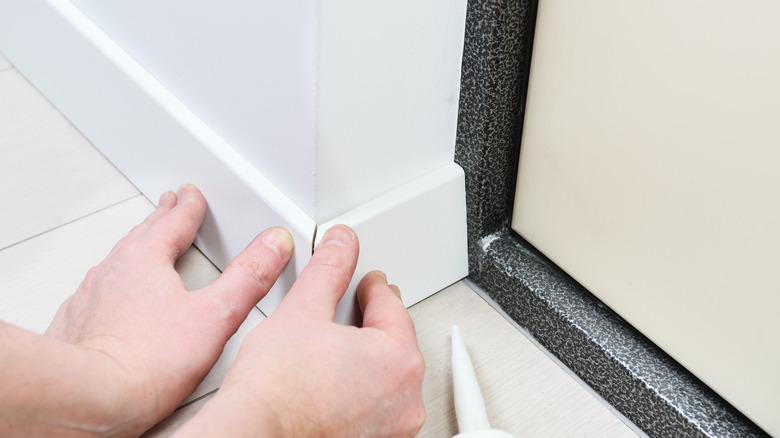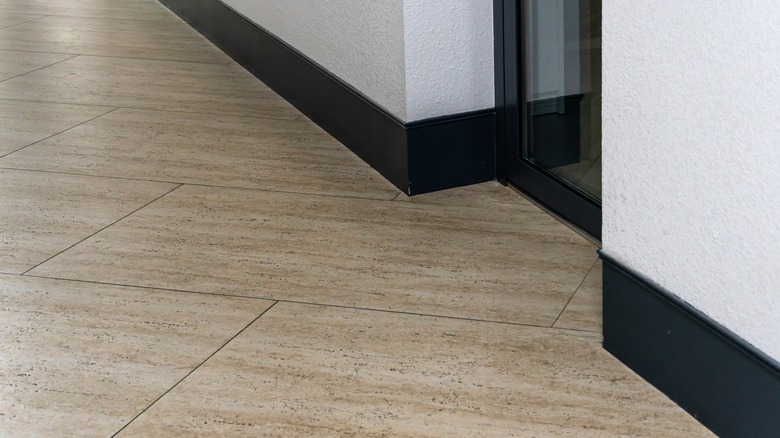Are Wooden Baseboards The Best Choice For Your Home? Here Are Some Alternatives
Like any other permanent fixture in the home, choosing your baseboards is no small feat. With the vast array of options available, pinning down the perfect choice can be overwhelming. While you may be more consumed with the color and style that best fits your room or house's aesthetic, it's just as crucial to consider the material of your baseboard. While wood remains a top choice for many homeowners, other popular materials like MDF (Medium Density Fiberboard) and PVC (Polyvinyl Chloride) are also worth considering. Each baseboard material has its pros and cons, particularly when it comes to ease of installation, cost, moisture resistance, and suitability for painting, priming, or staining. Because of these varying characteristics, one material might suit your needs better than another.
When it comes to the baseboard material, wood is the most traditional substance available. But even within the category of wood, there are numerous options. Wood baseboards can be made from softwoods like pine or hardwoods such as maple, oak, and cherry. The main advantage of choosing wood is the flexibility it offers in selecting the specific species and grain to perfectly match your home's style. Wood baseboards give you choice to let the natural grain show through or to enhance them with stain or paint. They're also quite durable, making them excellent for high-traffic areas. Some downsides of using wood are its cost and tendency to warp and split when nailed.
Top alternatives to wooden baseboards
The top two contenders rivaling wood baseboards are MDF and PVC. MDF is much cheaper than wood, making it appealing for large installation projects. Because it's engineered wood, it's softer, so it cuts more easily and it's crack and split resistant, making it the ideal material if you're going the DIY route and need to do a lot of shaping and cutting. MDF can't be stained, but they're always pre-primed and ready to paint. The main drawbacks of MDF baseboards are their susceptibility to moisture and lower durability, making them unsuitable for high-moisture environments or high-traffic and high-impact areas.
PVC baseboards are also slowly gaining acceptance for interior use. Its top advantage over MDF and wood is its waterproof characteristic. It won't absorb moisture from the air or ground, so you don't have to worry about expansion and shrinkage cycles. This quality makes it ideal for use in areas with high moisture like laundry rooms, kitchens, and bathrooms. Since it's not a great food or water source for pests, insects are less likely to invade your homes. But the biggest downside is its cost. It's also less durable and can easily be dented or damaged. PVC trims are typically manufactured in a crisp, white color and remain so through the years so you don't have to repaint your baseboards. However, the vinyl spackle used to cover nail holes turns yellow over time, detracting from the aesthetic of your otherwise pristinely white PVC baseboard.
Other alternatives and considerations when selecting your baseboard
If you're still weighing your options before getting new baseboards, here are helpful considerations. For areas that see a lot of foot traffic, like entryways and main hallways, opt for a more durable material. In rooms where appearances are more important, like your living room, you may choose something that's more visually appealing. Installation is another key factor. Your home's layout, like its angles and awkward corners, may limit your material options or require a custom build. Think about how much it will cost to install a baseboard (if you're planning to hire). If you're planning to DIY, go for materials that are easier to handle and are more forgiving. Hiring a professional may be better for larger spaces or baseboards with complex profiles. Lastly, consider the final look you're going for. Some materials can't be stained or painted, while others can give you greater design freedom. Don't forget to ensure that the baseboard blends well with other elements like crown moldings and door casings.
It's important to know that you're not limited to wood, MDF, and PVC for your baseboard material either; there are also less common choices like aluminum, metal, and rubber. While you typically see them in commercial settings, some modern homes embrace aluminum and metal baseboards for their sleek, contemporary vibe. These materials not only offer nearly indestructible durability, but also help create an industrial tone. They look fantastic alongside polished concrete walls or with features like wood flooring or accent walls.


